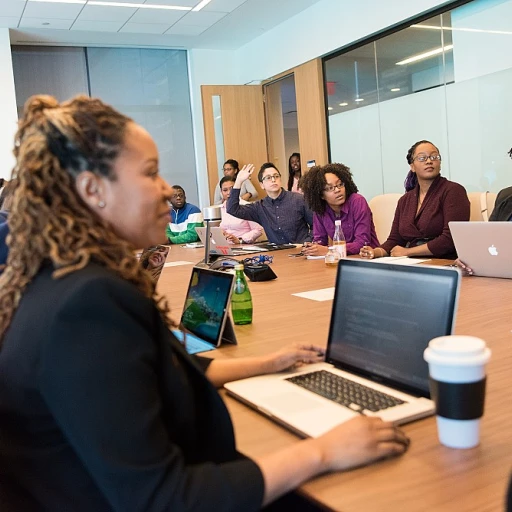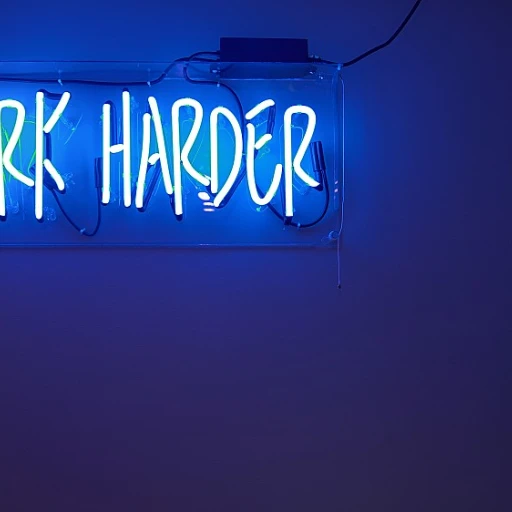
Understanding the Role of Recommendation Letters in Succession Planning
The Significance of Endorsements in Career Advancement
In the dynamic world of business, a well-crafted recommendation letter plays a pivotal role in succession planning. Often seen as a key element in the promotion process, these letters act as endorsements that highlight an employee's skills, work ethic, and achievements. They provide a detailed perspective into the candidate's professional journey, thus assisting decision-makers in identifying suitable successors.
A reference letter serves as a vital communication tool between the manager and the hiring manager, shedding light on how the candidate has performed in their current role and how they may excel in future roles. This document can significantly influence the outcome of the employee's advancement opportunities, making it essential to understand its role in succession planning.
Reliable letter templates help ensure consistency in letters across an organization. However, understanding the intricacies of the recommendation letter allows managers to tailor each document to best fit the company's overall succession goals. For those looking to dive deeper into creating effective development plans for managers, explore more here.
Succession planning relies heavily on detailed letters that offer insights into potential leaders. As a part of this process, recommendation letters must be meticulously prepared, revealing important details about the candidate's professional accomplishments, their potential to fulfill the job description, and their readiness to take on new responsibilities. Each recommendation should not only reiterate the employee's past performance but also their future capabilities.
Key Elements of a Strong Recommendation Letter
Crucial Components of a Persuasive Endorsement
Crafting an effective recommendation letter is more than just a formality; it is a strategic component in succession planning that can significantly impact an employee's career trajectory. While those tasked to write letter templates can be tempted to fill them with generic praise, a truly compelling endorsement requires specific, well-thought-out elements. At the core of a strong reference letter lies a comprehensive depiction of the candidate's job performance. It is vital to include precise details about the professional journey of the employee, as this underpins the overall recommendation. This frame of reference provides hiring managers and other stakeholders with an intimate view of the individual's true competencies and potential to excel in advanced roles.- Relevance to Job Title: Begin by indicating the current job title of the employee, alongside specific duties they have excelled in. This form of letter recommendation clearly ties the candidate’s existing skills and achievements directly to the roles they are being considered for. This demonstrates their readiness to ascend the professional ladder.
- Demonstrated Work Ethic: Articulate how their work ethic and professional demeanor have contributed to the business's success. These insights speak volumes in illustrating why this person is considered a valuable business partner in the organization’s future.
- Quantifiable Achievements: Reference letters shine brighter when achievements are grounded in data. Consider the inclusion of measurable successes that reflect their capacity to deliver results, thereby emphasizing their readiness to assume greater responsibility.
- Testimonials and Endorsements: Where appropriate, incorporate a succinct testimonial from a manager or a senior business partner. These personal endorsements supplement the formal details and provide a holistic view of the candidate's impact within the team framework.
Tailoring the Letter to Fit Succession Planning Goals
Customizing for a Clear Succession Path
When writing a recommendation letter, aligning the letter with the goals of succession planning is crucial. Tailoring your letter ensures it not only highlights the employee's skills but also supports their future development within the company. A well-crafted recommendation should act as a bridge, helping the candidate seamlessly transition into roles of greater responsibility. To achieve this alignment, consider the following steps:- Understand the Business Needs: Familiarize yourself with the company's long-term vision and identify the specific job titles or roles essential for growth. Consider how the candidate's current skills could fill future gaps.
- Align with Job Descriptions: Reference the specific job descriptions and requirements of the roles the candidate aspires to. Tailor your letter to emphasize how the candidate’s skills meet these requirements, showcasing their capability to advance.
- Incorporate Professional Growth: Highlight the employee's professional development over time. Share examples that demonstrate their work ethic and adaptability, suggesting their readiness for more complex tasks.
Common Pitfalls to Avoid When Writing Recommendation Letters
Avoiding Common Missteps When Crafting Reference Letters
Writing recommendation letters is a crucial part of succession planning, yet it's easy to fall into common pitfalls that could lessen their impact.- Lack of Specificity: A recommendation letter should not resort to generic praises about the employee. Instead, be specific about their achievements and skills that align with the job description they are aspiring to. For instance, detail how their professional abilities have contributed to the business' success.
- Ignoring the Future Role: Often, the biggest mistake is crafting a letter that doesn't consider the future job title of the candidate. Tailor your letter to reflect their potential fit for that particular role.
- Omitting Key Skills: A well-rounded recommendation includes detailed insights into the employee's skills, such as their work ethic, leadership qualities, and ability to collaborate with business partners.
- Failure in Personalization: Avoid using a generic template. Borrow elements from sample recommendations, but ensure your letter reflects the unique attributes of the person you're writing for.
- Disregarding a Professional Tone: Maintain a formal tone that underscores the significance of your recommendation. Your professionalism will resonate with both the hiring manager and the employee seeking advancement.
Sample Recommendation Letter for Employee
Illustrative Example of a Persuasive Employee Recommendation
To assist individuals in understanding how to craft an effective recommendation letter that aligns with succession planning goals, examining a sample can be particularly insightful. A well-written recommendation letter serves not only as a testament to the candidate's skills and professional demeanor but also advocates for their potential in filling advanced roles within a business. Sample Recommendation Letter: Dear [Hiring Manager's Name], I am writing to provide a recommendation for [Employee's Name], who is currently employed as [Current Job Title] at [Company Name]. Having closely collaborated with [Employee's Name] for [Time Duration], I have witnessed firsthand their exceptional work ethic, commitment, and [specific skills relevant to the job description]. During [Employee's Name]'s tenure with us, they have consistently demonstrated an ability to handle complex projects with precision and diligence. In particular, their involvement in [specific project or task] showcased their capacity to [specific detail related to the project]. This project not only met all business objectives but also exemplified their innovative approach and leadership potential. Such efforts are highly indicative of their capacity to excel in a role with increased responsibilities. In addition, [Employee's Name]'s adaptability and resilience in demanding situations have made them an invaluable asset to our team. Their capability to engage effectively with both team members and business partners illustrates their superb communication and interpersonal skills, making them an ideal candidate for higher-capacity roles. Given my direct experience working with [Employee's Name], I am confident in recommending them for [Job Title]. I believe they will bring the same level of professionalism, dedication, and creativity to your organization as they have consistently demonstrated in our company. Please feel free to contact me at [Your Contact Information] should you require any further details. Thank you for considering this letter as a testament to [Employee's Name]'s capabilities. Sincerely, [Your Name] [Your Job Title] [Your Company Name] This sample recommendation letter illustrates how specific achievements and skills can be highlighted to support the candidate's suitability for succession opportunities. The emphasis is on clear, professional references to the employee's contributions and potential, ensuring the hiring manager sees the value the candidate will add. By utilizing templates and structuring letters to effectively communicate an employee's attributes, organizations can harness recommendation letters as powerful tools in their transition strategies. Engaging in thoughtful writing that reflects well on the candidate and aligns with both short- and long-term succession goals is paramount in successful succession planning outcomes.Leveraging Recommendation Letters for Long-term Success
Harnessing the Power of Recommendation Letters for Strategic Growth
Using recommendation letters as a tool for long-term success requires thoughtful application and integration into the broader succession planning process. By focusing on strategic growth, recommendation letters can serve as a strong foundation for building the next generation of leaders within your organization. To effectively leverage these letters, consider the following:- Align with Organizational Goals: Recommendation letters should not exist in a vacuum. Align them with the company's long-term goals and objectives. This ensures that the skills and qualities highlighted in the letters support the overall strategic vision.
- Develop Leadership Pipelines: Consistently updating and reviewing your pool of recommendation letters can help you identify high-potential candidates. Ensure that letters are stored in a centralized location where managers can easily reference them when considering internal promotions or development opportunities.
- Incorporate Feedback Loops: Create feedback mechanisms where employees can understand how their recommendation is being used. This not only motivates the individual but also encourages them to enhance their professional skills and work ethic for future growth.
- Fostering a Culture of Professional Development: Including elements of employee development in reference letters can help embed a culture that values continuous learning and growth. This encourages employees to see recommendations not just as endorsements, but as milestones in their career development journey.












